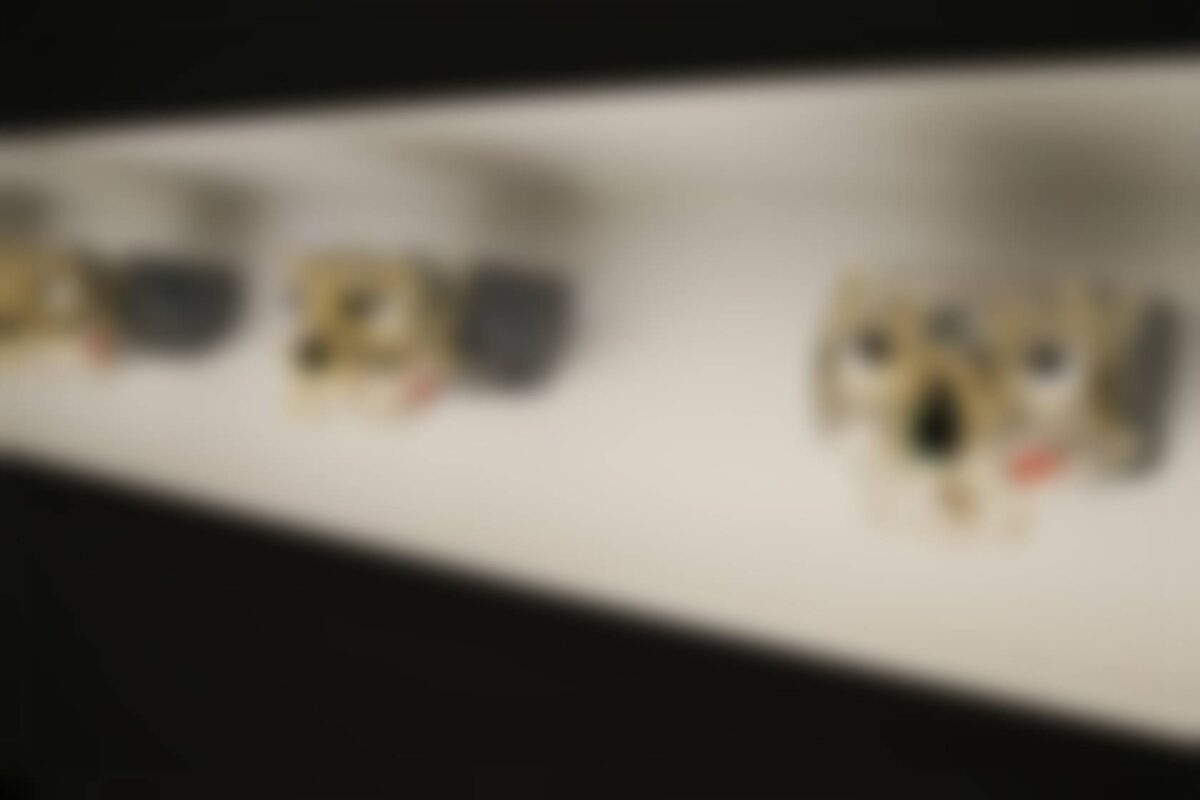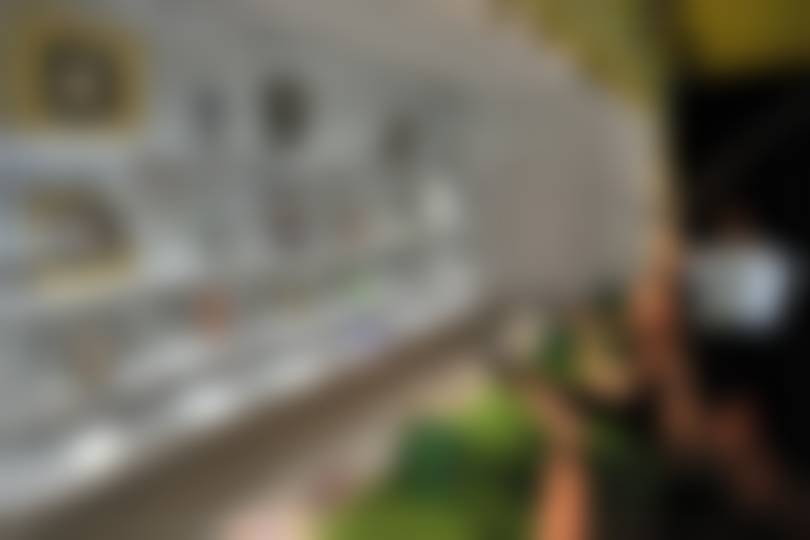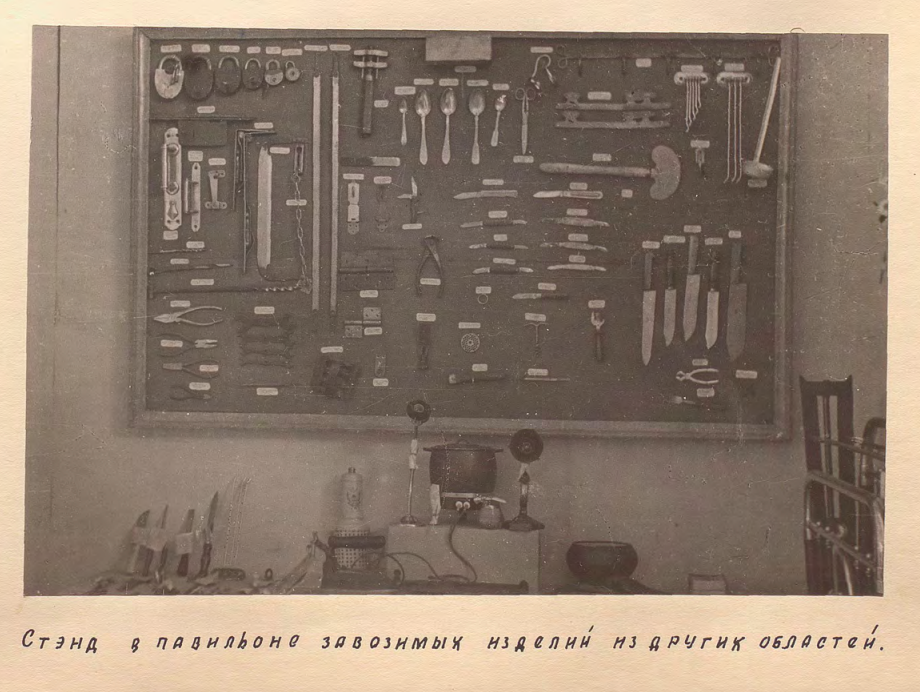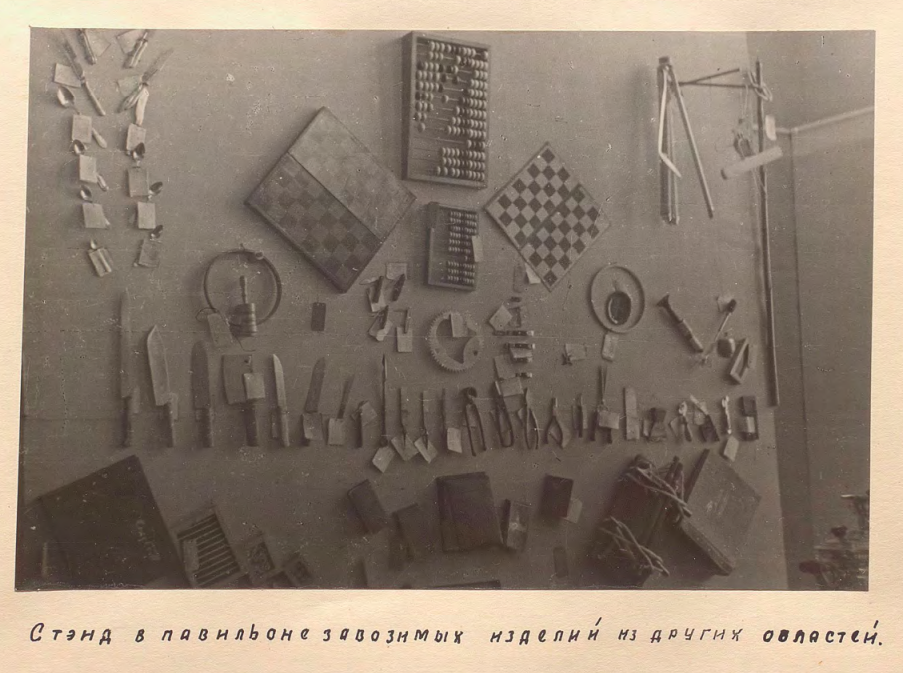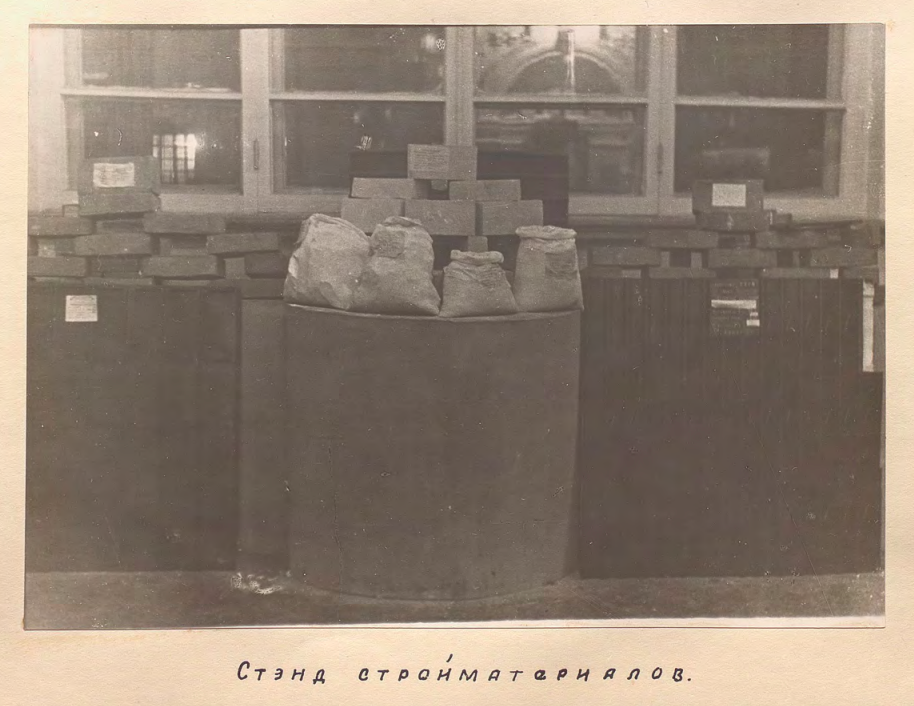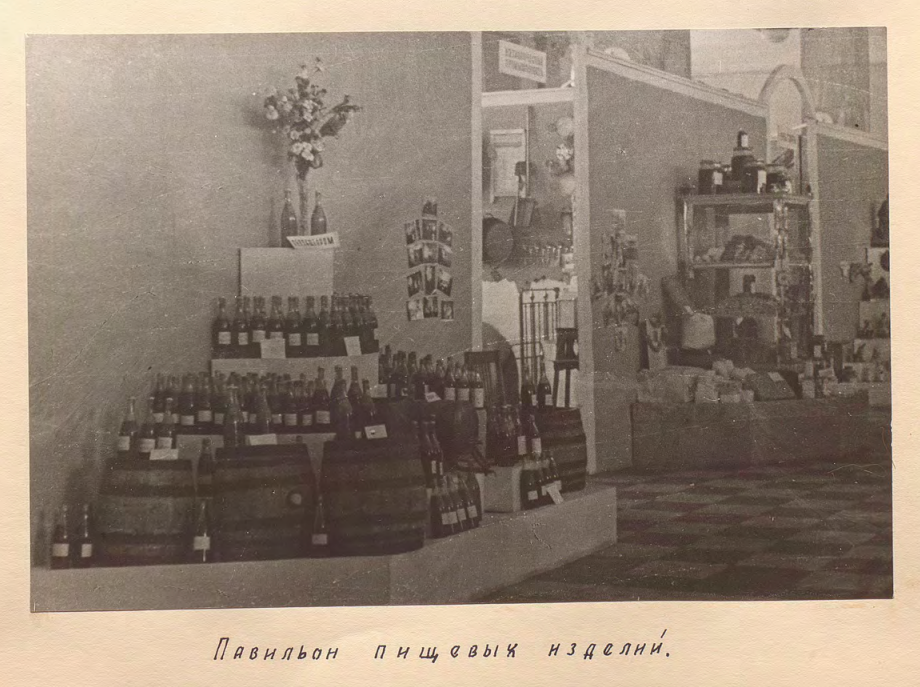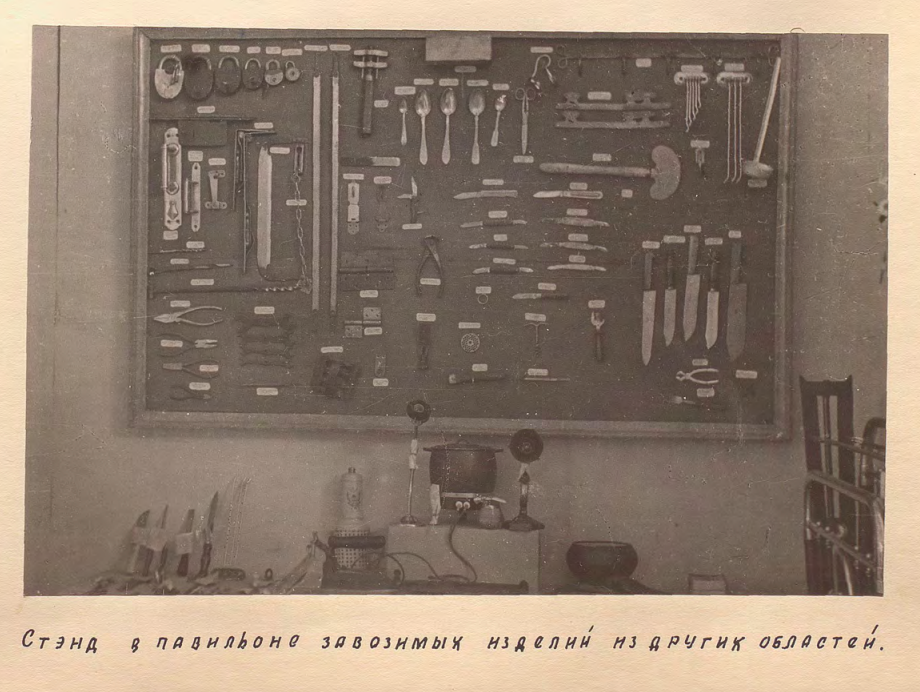1.
Art is what calls itself art and what is supported by the infrastructure of artistic production. This is the most general formulation of how art functions today. Not only contemporary art, but also the art of the past has to exist in this (institutional and nominalistic) regime. And this, probably, is why the productivists, who consciously refused to identify with artists (at least, with those who worked in the easel format) and who tried to sever their ties with the whole art system, still have relatively marginal status compared to other avant-garde artists, whose works are fully inscribed in the Western artistic canon. Although this canon includes works by Popova, Stepanova, Rodchenko and Tatlin, which correspond to the visual code of modernism, the conceptual and political foundations that made this code particularly important in the 1920s are often bracketed out. The life-creating intuitions of the modernists of the Silver Age – the symbolist poets, first and foremost – are also excluded because their aesthetic attitudes cannot be inscribed in the global art system that we have today.
In the present text, we will try to relate to the vagaries of Russian culture of the first third of the last century in a new way and to place the accents differently. This will require looking at that culture from a different viewpoint, thinking creatively about a post-capitalist future and what could come after contemporary art, whose primary matrix is modernism, which, despite its innovations, remains on the institutional territory allotted to it, and not the avant-garde, which challenges the boundaries of art and life. So, for our purposes, projects that are predicated on radical manifestations of the creative activity of mankind – productivism, as well as constructivism and cosmist life-creation – acquire special importance and call for theoretical and political interpretation.
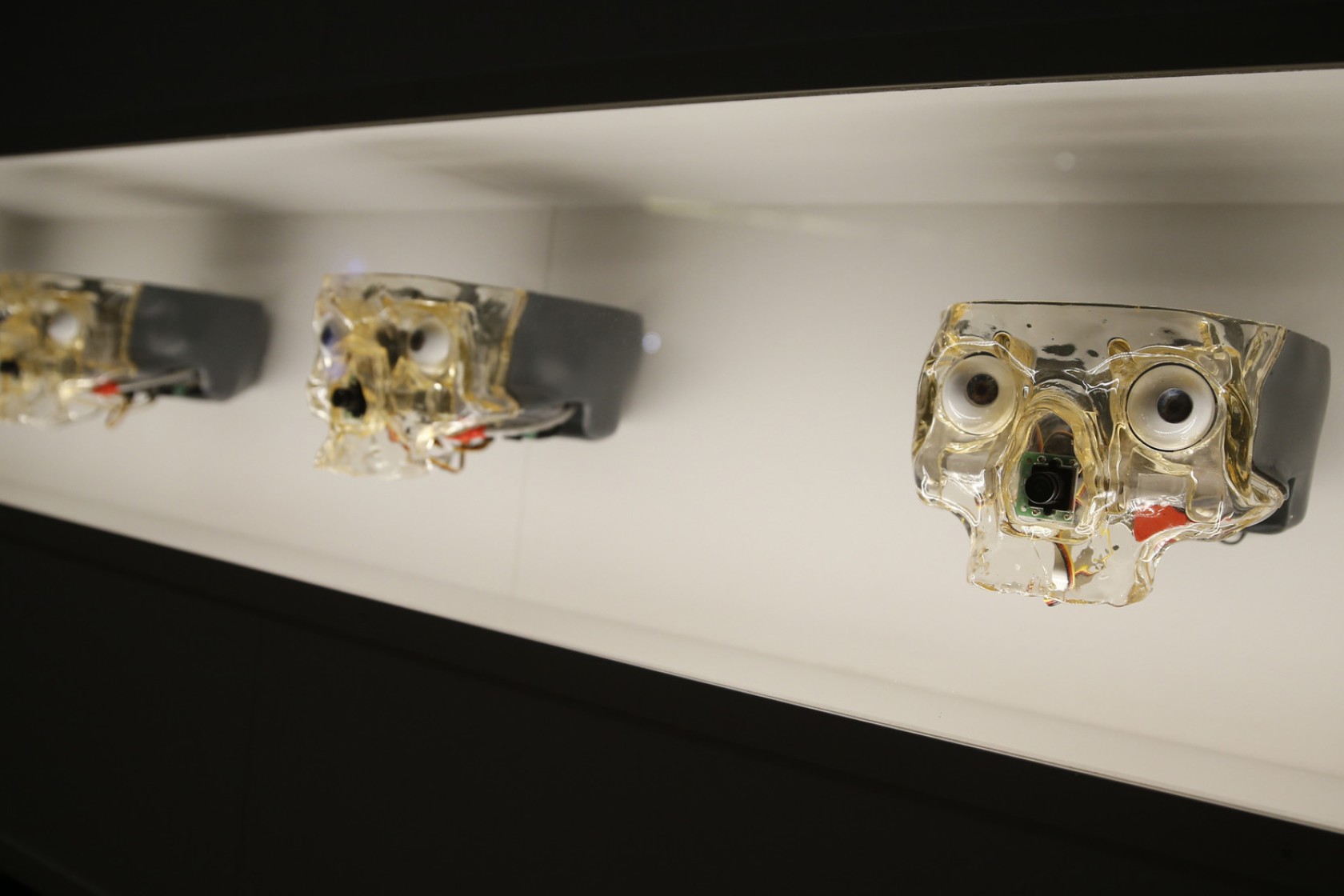
Two divergent tendencies are distinctly present in interpretations of productivist art. On the one hand, the ideas about life-building of the productivist Boris Arvatov and the constructivist artists who were close to him can be viewed as an abbreviated and secularised version of the cosmist life-creation, which we already mentioned and which is related to Russian religious thought. On the other hand, one might insist on the exclusively Marxist origins of productivism, which was influenced in its development by the philosophy of Alexander Bogdanov. As a rule, these tendencies are contrasted or even considered mutually exclusive. However, in a certain perspective, corresponding to the “post-capitalist” viewpoint that has been outlined, they not only coexist – they need each other.
2.
Cosmist life-creation and Marxist life-building each formulate in their own way the problems of death, love and social justice as problems that face each and every member of the human species (and at the limit, the universe as a whole), and offer their own solutions. Both life-creation and life-building consider themselves to be the crowning glory of the art we are accustomed to – from cave paintings to contemporary art practices – and at the same time they return art to its roots. Both life-creation and life-building argue that art was at some point forced, under the pressure of circumstances (primarily the invincibility of death and the economic necessity, which later gave rise to capitalism), to separate itself from the flow of life and become representative. The challenge for the future is to bring art back to life itself. This does not, of course, mean a return to the fetish of a particular art form, but the reinvention of art as an integral part of life based on a just society and a just natural order. This intention can also be found in the work of Nikolai Fyodorov, who wrote about art that is born out of biological creativity (like walking upright), but that cannot help becoming representative when faced with the threat of death (funeral lamentation and burial rituals).
The key difference between these two ways of thinking about the limits of the development of art is in the scale of the questions posed and the degree of ambition of the answers that are offered. Arvatov’s version suggests that the limitations of art are caused primarily by social injustice. After the class contradictions that gave rise to alienated creativity have been resolved, the artist again becomes an equal member of the production process. The further development of art is not oriented to the formulation of fundamental tasks (ontological, epistemological, etc.), but is tied to specific goals of production – to satisfy consumer needs; to resolve difficulties associated with the extraction and use of various materials; to design certain engineering solutions. The cosmist problematic begins exactly where this Marxist problematic, outlined by Arvatov, ends.
Even after the proletarian revolution and victory over the anarchy of production relations, there will be zones in the world that resist life-building organisation. First of all, these are affects, i.e., psychophysical states associated with deep personal experiences (most of all, love and death), states that are not fully mediated by social relations, no matter how harmonious these relations may become. If neither the experiences nor the affects themselves disappear, then the traditional artistic means of “supplementing” reality – traditional easel, representational art – will also persevere. This motif occurs quite often in Arvatov’s writings as an explanation of the emergence of certain artistic techniques that aim to give an illusory solution to real problems: “Since absolute organisation is practically unattainable, since some elements of disorganisation always remain in the personal life of the members of a socialist society, one might think that visual supplementation will remain even under socialism….
The individual will, apparently, compensate for his or her personal dissatisfaction through such artistically organised self-expression and communication. [1]”
So the sphere of affect remains outside the scope of the organisational efforts of creativity. Matters are rather different for Fyodorov and the other cosmists. The experience of love and death, as a rule, finds its expression in sexual relations, which are the oldest means available to man in order to battle against death. Radical regulation of this experience by the elimination of its deepest causes (mortality, the disunity of humanity) is a key item of the cosmist agenda. In this regard the horizon of the problems, which cosmist art wishes to embrace, is the elimination of the biological specificity of the human species and even an evolutionary transformation of the Universe. However, the necessary condition for the emergence of such an art of life is the resolution of all social conflicts (inequality of the knowledgeable and the ignorant, old and young, peasants and workers, exploiters and exploited, etc.).
Neither Fyodorov nor the other cosmists explain how this state of affairs can be achieved. It is supposed that education and participation in what Fyodorov called “the common cause” will be sufficient. The cosmists do not describe the mechanisms of mutual integration of art, science, education and religion, which would sustain the intuition of immortality. Fyodorov avoided mystification of the tasks set by the doctrine of the common cause, instead prioritising scientific and technical victory over death and a technological resurrection of all people who have ever lived. For a man who, despite all his religiosity, remained an adherent of materialistic solutions, the absence of a description of the mechanisms for transforming the social order looks like an oversight. It is interesting that religious thinkers close to Fyodorov in spirit, such as Vladimir Solovyov, Sergei Bulgakov and Nikolai Berdyaev, who preferred mystical revelation rather than materialism, set a different goal and principal indicator of social change, namely the making-divine (“obozheniye”) of life on Earth as a particular spiritual and material state of the world and of a person. [2]

We in the present day can say that creativity, which deals with a biological substrate, has now, in a way, become available to the artist: modern “science art” is gradually being transformed from an esoteric and costly enterprise into one that is increasingly accessible, where experiments can be carried out with various forms of life, including at the level of their biological organisation. [3] But this is by no means to suggest that the cosmist programme is being implemented. If productivism was frustrated by the limited possibilities of industrial production in the first third of the 20th century, in the 21st century the cosmists’ demand for life-creation is being met without the necessary basis, which is social justice. It seems that the life-creating (cosmist) and life-building (productivist) positions need to encounter each other once again in order to acknowledge their own limitations.
3.
The cosmist version of life-creation emerged from vigorous debates in the Russian intellectual world around Richard Wagner’s Gesamtkunstwerk. The influence of the German composer’s theoretical programme was particularly strong among the symbolists and it inspired and propagated interest in non-representational forms of creativity. One answer to Wagner was formulated by Fyodorov in his texts that drew a distinction between Ptolemaic art (the art of likenesses) and Copernican art (the art of true creation of life). Ptolemaic art is the creation of “supposed similarities” i.e., mimetic art, or, more generally, art as a particular practice limited by the institutional framework and going no further than conflict-resolution in thought. Copernican art is active: it involves the creative transformation of reality with the aim of technological victory over death and the material resurrection of all the dead. Fyodorov also describes how the transition from one art to another is to occur and what role science and technology will play in this transition: “The transition from the art of likeness to the art of reality, from Ptolemaic to Copernican art, is to be effected through a museum of all the sciences brought together in astronomy, that is, a museum with a tower and with a temple-school, a tower for observing shooting stars, for observing the ongoing construction of the world, and at the same time its collapse, and also for meteoric observations, transforming these observations into experience, into action, through conversion of the military art into the art of natural experiment. [4]”
Ultimately cosmist life-creation not only achieves the material resurrection of the dead with the help of science and technology, but can also entail various mystical and miraculous accomplishments, such as the synthesis of the material and the ideal, the unity of heaven and earth, and even the second coming of Christ in the guise of creator. [5] Obviously, the Marxist interpretation of the creativity of life is inadequate for the cosmist thinkers and it is not surprising that productivism stops halfway. [6] It returns art to life (and even makes it Copernican in Fyodorov’s language), but it limits the sphere of life exclusively to the organisation of a new, maximally plastic, creatively organised form of production and, therefore, a new organisation of ordinary life.
In other words, as we already said, life-building for Arvatov does not imply a change in the biological foundations of human existence. For Fyodorov, on the contrary, ordinary life and the production that supports it do not have value in themselves and changes to them mean nothing unless the goal is the transformation of man as a species. Ordinary life and production are instrumentalised in the common cause; they are important only for the contribution they make to the resolution of all social and interpersonal conflicts in order to achieve the main goal, which is technological victory over death. Creativity is not a matter of reorganising an already existing, albeit insufficiently well-ordered life, but as the direct, biological production of life as such.
In Fyodorov’s Copernican version of art as the crowning achievement of a certain activity, we can see a repetition of the first creative act carried out by a person. For the inventor of the common cause, art begins when man first stands on his feet and establishes the two-legged mutation for future generations. This evolutionary leap expresses the urge to overcome the gravity of the Earth and the natural limitations that hold back the development of the human species. For the cosmists, evolution, the struggle to expand our capabilities as a species and the transformation of the world all rank as creative activity, as the basic and most important level of art. From which it follows that the transition to life-creation as resurrection is just such an evolutionary leap, one that changes the very idea of what is human. And, for the cosmists, this transformation would not be the last. The forward movement of evolution involves a creative change in conceptions of what life is and must end in a creative transformation of the entire cosmos. The human species is but a moment intervening between two biological mutations, between two creative acts.
4.
Marxist interpretations of productivist art tend to deny that Arvatov has anything to do with cosmism and with Russian religious philosophy. [7] The issue here is not just the absence of a direct intellectual continuity of life-creating ambitions, i.e., claims to a fundamental reorganisation of life, but also the decisive role of the historical situation: in the first post-revolutionary years, art was often perceived pragmatically, in the context of urgent tasks. [8] In the years when the concepts of productivist art were taking shape (and even more so a little earlier, during the conceptualisation of proletarian culture) it was believed that Marx and Engels did not develop their own aesthetic theory or, at least, they did not work it out in a systematic form. Arvatov’s concept of “Marxist aesthetics” assumed the removal of art from industry and ordinary life, but in a way that would resist the degradation of artistic achievements and would give scope for their creative interpretation. In other words, the goal of productivism was to make life as highly organised as art, and not the abandonment by art of its complexity and its dissolution in pragmatics and the urgent tasks of production. This was the interpretation of Marxist art that would influence Walter Benjamin (via the constructivist Sergei Tretyakov). Benjamin would view creative activity as various forms of industrial practice, in no way different as to their key principle from the capitalist production of goods. [9] It is important to note that, for Benjamin (and also for Brecht), relations of production are illuminated as if from within art, so that life as a conscious conflict of productive forces and production relations comes to the place of what had previously been the abstract, ideal, conflict-free realm of creativity. For Arvatov, the situation is somewhat different: the freedom of the professional artist has to be brought to the ossified relations of production that exist in life; the artist-engineer goes to production, and does not merely become conscious of his activity in the realm of art as production activity.
It is hard to argue with the Arvatov’s Marxist analysis, describing the gradual alienation of creative activity from social production. However, the thesis that art should abandon representation and engage in the creative reorganisation of production came in for criticism, even from the left. The Marxist authenticity of the aspiration of post-revolutionary art to overcome its own borders is put in question by Mikhail Lifshits and authors of the 1930s who were close to him. Lifshits devoted most of his life to a reconstruction of the aesthetic views of Marx and Engels, according to which the true meaning of art for Marx lies in high-class representational realism and such realism does not have to be completely determined by the artist’s attitude to the class struggle. The masterpieces of past eras were often created in spite of the author’s place in the system of social production, i.e., in spite of class affiliation.
In this sense, every great work of art, on the one hand, anticipates the aesthetics of the future, the aesthetics of a free communist society, and, on the other hand, it necessarily contains a “residue” of the historical era when it was created.
The conceptualisation of Marxist aesthetics, proposed by Lifshits, which can, at a push, be called “conservative”, laid the intellectual ground for the doctrine of socialist realism. So Lifshits was the first theorist to provide a systematic analysis that defined the range of possibilities of Soviet aesthetic theory for many decades to come, at a time when, in the international context, debates over the relationship between Marxism and art were only just getting started. [10]
For Lifshits, the art of the historical avant-garde and modernism consisted almost entirely of the “sediment” of the era of industrial capitalism. It contained nothing that could stand the test of time. So it could make no claim either to the significance, which some masterpieces of the past certainly possessed, or to the strength of the socialist aesthetic of the future society, liberated by the proletarian revolution. However, Lifshits considered his main opponent to be “vulgar sociology” (he himself was among the originators and propagators of the term), represented by Vladimir Fritsche, Yeremia Ioffe and other Marxist sociologists, including Alexei Fyodorov-Davydov and Boris Arvatov. They, in turn, insisted that cultural products are completely determined by the class position of their producers, so that, prior to the proletarian revolution, art could only reflect various ideological distortions of reality associated with the class struggle. [11] Productivism also received its share of criticism from Lifshits in the 1930s. According to Lifshits, by rejecting the representative function, productivist art simply replicates reality, losing the defining characteristic of art, which is figurativeness, i.e., the ability to reflect reality in an artistic form: “By reproducing reality, art takes possession of it in fantasy, forms a bridge between the realm of necessity and that of freedom. Science gives a picture of prevailing necessity; in practical life our freedom is limited by historical conditions, by the necessity of labour and suffering. Only art transports us from the realm of necessity to the realm of freedom, which begins on the other side of purposeful labour. This artistic reproduction of life is the development of the productive creative energy of human beings «as an end in itself». [12]”

Of course, as rational spontaneity develops, all human practice will acquire a creative character and will approach art. The practice itself will acquire a gnomic character, so to speak – it will cease to be grossly utilitarian, egoistically hostile or hooligan, destroying everything around it. And our “historical materialist” understanding of practice is still utilitarian in the spirit of the “theory of exploitation” of the 18th century, multiplied by Meyerhold’s Earth Rampant. Dialectical, creative practice cannot, of course, be reduced to pure contemplation, but it includes a moment of contemplation. This is the unity of decision and indecision, of unity and contradiction, the harmony of harmony and disharmony. [13]
One may disagree with Lifshits’ aesthetic assessments, but there is no denying his knowledge of Marxist texts. He is right that careful reading of relevant fragments in the texts of Marx and Engels, which reveal their views on art, do not give grounds for requiring artistic activity to renounce the representational function and to “remove” this function in production. Where, then, does this demand arise for the Marxist productivist Arvatov?
Arvatov owes much of his intuition to the influence of Alexander Bogdanov’s “organisational” version of Marxism. [14] The original direction of Bogdanov’s revision took shape in the early 1900s, during his work on the text Empiromonism. The reflections of that period, which underpin Bogdanov’s aesthetic positions, would later define the policy of Proletkult. First and foremost, Bodganov stresses the need for unity of sensory experience, the achievement of which is hindered by contradictions inherent to the political and economic organisation of production – contradictions that can only be overcome by the proletarian revolution. Experience, according to Bogdanov, is an ontological category; there is no gap between subject and object, mental and physical. Mental experience is individual, unmediated and poorly organised; physical experience is mediated and socially organised. The two types of experience are differently organised, sensory forms of correlation with the world. The sphere of art is only a special case of organisational activity. Bogdanov actually writes that “beauty is organisation”. [15]
The goal of the class struggle is to restore the integrity of experience, which was first lost under feudalism due to the formation of an authoritarian type of organisation, and then, under capitalism, due to the anarchy of the market and of production, i.e., because of disorganisation. So the way in which, for example, the bourgeoisie organises the world (especially at the reactionary stage of its development) is fundamentally different from the way, which will be available to the proletarian in the future. Firstly, the proletarian is directly, physically and mentally involved in the labour process, i.e., in the process of (re)organising nature; secondly, the activity of the proletarian proceeds from the need to eliminate the disorganisation of the capitalist mode of production. In this regard, Bogdanov insists on the independent value of “proletarian culture” as a special way of existing in the world: without this value, the proletarian revolution could degenerate into a military dictatorship in the service of state communism.

Art for Bogdanov is only the organisation of colours on a canvas or letters in a text, representing certain problems of organisation as such. Despite his desire to integrate all life experience into a certain integrity, Bogdanov denies art the possibility of full integration. [16] Art belongs primarily to the “superstructure” and not to the “base”, and does not penetrate directly into the sphere of life or production. In this sense, art is a way of organising organisers, but it is not organisation as such. Bogdanov’s artist-organiser certainly differs from the artist as ideologue of a class divorced from production, but the difference is not radical enough to enable him/her to match the artist as engineer of life, as defined by the productivists. Here Bogdanov is paradoxically close not only to the Marxist letter, but also to Lifshits, despite all their significant differences (as an example of their differences, Bogdanov’s urge to highlight the unique culture of the proletariat and justification of attention to the classics based solely on their skill of execution were unacceptable to Lifshits). Bogdanov’s intuitions imply a critique of modernist trends and suggest that the workers of Proletkult must be ready to learn from the classics (for example, from the romantics, who expressed the progressive and even revolutionary sentiments of the bourgeoisie), and not from Bogdanov’s experimentalist contemporaries – the modernists, who express the decay of the bourgeoisie as a class. However, these intellectual intuitions are present in Bogdanov only in a schematic or, as Lifshits would say, in a “vulgar” form: “In art, form is inextricably linked with content, and that is why the “latest” is not always the most perfect. When a social class has fulfilled its progressive role in the historical process and is in decline, the content of its art inevitably becomes decadent, and the form follows and adapts to the content. The degeneration of the ruling class usually happens through a transition to parasitism. It is followed by satiety, dulling the sense of life…
In general and in the main, art technique should be learned, not from these organisers of decay in life, but from the great workers of art, who were engendered by the rise and flourishing of classes that are now obsolete, from the revolutionary romantics and from the classics of various periods. All that can to be learned from the “latest” artists are minor details, in which – it is true – they often excel, but even then caution is required, to avoid picking up the seeds of decay from such close contact. [17]”
However, Proletkult and the productivist avant-garde did not heed the call to “learn from the classics”. Proletkult was a typical post-symbolist avant-garde association, which, unlike the more radical art movements that existed alongside it (primarily the futurists), tried in many ways to follow Bogdanov’s instructions through a commitment to what might be called “content”, [18] although it was content that went beyond the boundaries that had been drawn for art. The exponents of Proletkult generally reduced work with form to a minimum (due to a lack of professional creative education and experience in creative work), which entailed excessive borrowing (sometimes without conscious dialogue with and rethinking of the borrowed material) and paradoxical inventions. While Western experimenters at the beginning of the last century strove to bring industrial objects onto the territory of art, the exponent of Proletkult, on the contrary, tried to apply the techniques of the art of the past in real life (at the factory and ordinary life). They turned bourgeois culture into a readymade in reverse. [19] For example, Bogdanov, defending the organisational value of art, writes that the performance of songs by a work collective increases labour productivity. On this basis the slogan for cultural activity of the proletariat in the first post-revolutionary decade might be: “Appropriate the appropriated!”.
But we should emphasise once again that the practice of the Proletkult exponents as “creators on the production line” goes beyond the simple idea of appropriating form from the classics and filling it with new proletarian content. To reduce the activity of Proletkult to the production of representative art is to reduce it to production that would be secondary in relation to the classics or futurists. [20] The excesses of Proletkult and of the productivist avant-garde that inherited is legacy offer insight to the scale and radicalism of the transformations that early Soviet art underwent.
In this context – in the context of art – it is worth mentioning Bogdanov’s medical experiments (Bogdanov had a medical training). Moving away, for various reasons, from the ideological leadership of the cultural activities of the nascent working class, Bogdanov began to experiment with the rejuvenating potential of blood transfusion. At first glance, such activity is far from aesthetics, but only if we interpret both aesthetics and art in a narrow and literal sense. Viewed in the context of productivist art and Proletkult, Bogdanov’s medical preoccupations can be seen as a continuation of the logic and ambitions of those movements, and as a climax of the historic avant-garde. In his role as avant-garde artist Bogdanov invented a method for efficient, “revolutionising” impact on the person, including at the level of the body. So a refusal of mediation through culture, leading to a “biologisation” of creativity, can be seen as a new, next step: the life-building logic reaches its limit and passes into life-creation, as it had once been defined by the cosmists. [21]
However, Bogdanov’s aesthetic theory turns out to be divorced not only from his experimental practice, but also from the philosophical logic of empiromonism. This gap is perhaps historical in nature and explained by the fact that empiromonism, i.e., an approach that asserts the complete unity of experience, can only be realised in a classless society. In a sense, Bogdanov’s position on art turns out to be more orthodox Marxist (at least in Lifshits’ version of Marxism) than his philosophy (and then science) of organisation, which was translated into the language of aesthetic theory by the exponents of the productivist avant-garde.
Bogdanov’s philosophy and his understanding of science stem from the theories of knowledge of Richard Avenarius and Ernst Mach. These were the thinkers who led Bogdanov to believe that ideas about the world are based on sensory experience and that science always deals only with simplified, constructed generalisations from experience – “complexes of sensations”. However, unlike the thinkers who inspired him and who were only interested in the epistemological status of such complexes, Bogdanov points out that “complexes of sensations” are mediated by social organisation, which means that they simply cannot be neutral. So he historicises the contradictions inherent in the methods of generalising a single stream of experience, attributing their specificity to a particular social formation. This emphasises the social and, therefore, the class character of construction of the “complexes of sensations”, which constitute the world for the person who perceives it. The organising activity of the proletariat, hindered by capitalist production, lies in the ability to carry out the maximum integration of experience, going as far as elimination of the differences between man, machine and thing. Only a new proletarian culture and science will be capable of reorganising sensory experience of the world. They will cleanse perception of the world of intellectual distortions and achieve “monism” or wholeness of life.
5.
The theory of industrial art arose independently of Russian religious philosophy and was not directly influenced by cosmist thought. However, the realisation in art by Arvatov and his fellow productivists of the ideas of Bogdanov’s empiromonism inevitably crossed the border that separated art production from the rest of industry: both could be understood as different complexes of sensations, socially constructed in the process of cognising the world and deciphering experience. Such an understanding, in turn, contradicts both the representative aesthetics of Marx and Engels, as described by Lifshits, and the aesthetic views of Bogdanov himself, as expressed in Proletkult.
Bogdanov’s characteristic striving for the integrity of life experience, for the direct creation of life and its organisation in order to achieve complete social, national, sexual and intergenerational equality in the overcoming through technology of the natural limitations of the human species is consonant with the ambitions of several of the cosmists. Think particularly of the calls by Fyodorov and Muravyov for social justice (overcoming the divided state of humanity) and, at the same time, for technological organisation of the world and of time in order to vanquish death. Bogdanov’s scientific, practical and medical activity – his organisation of an institute for blood transfusion, which would rejuvenate and achieve intergenerational unity of the proletariat – tended in the same direction. [22]
Arvatov’s interpretation of Bogdanov’s ideas as applied to art brings them to their logical conclusion, but only as far as a solution to the problems of social organisation, without affecting the biological level of the production of life. If Bogdanov’s programme were to be fully implemented, productivism would be supplemented by the life-creation of the cosmists with their desire to accelerate and transform the evolutionary process, understood as the highest form of artistic activity. Beauty is not only organisation, but organisation of eternal life; it is organisation that penetrates to the deepest level of the structure of the world and overcomes the contradictions that lie at its foundations.
Translation: Ben Hooson
